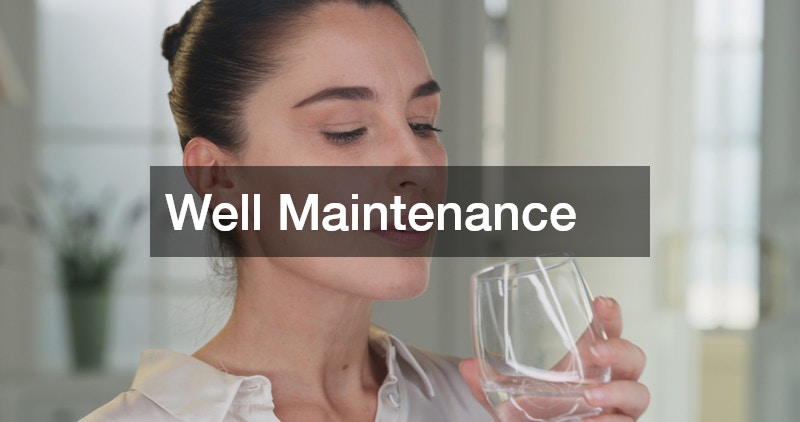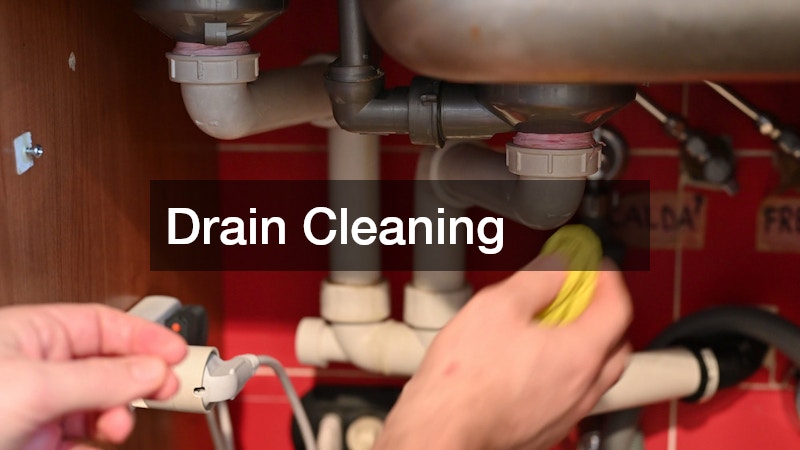Most homeowners stay busy juggling work, errands, bills, and family responsibilities, so it’s no surprise that certain home maintenance tasks slip through the cracks. Many of these chores don’t demand daily attention, and they often don’t show obvious warning signs—at least not at first. But even small problems can turn into expensive repairs when they’re ignored for too long. From keeping water out of your basement to staying ahead of electrical hazards, a home only stays safe and functional when the behind-the-scenes systems get the upkeep they need.
The reality is that maintaining a home isn’t just about mowing the lawn or tidying the living room. It’s about remembering the less glamorous tasks that prevent structural damage, protect your family’s health, and preserve the long-term value of your property. And while some issues feel intimidating or complicated, most become manageable once you know what to look for and who to call when help is needed. Whether you live in an older home or a newly built one, certain problems tend to hide until a costly emergency brings them to your attention.
This article walks you through ten of the most commonly overlooked household concerns. Each one seems small at first, but paying attention to them now can save you a lot of stress later. If you’ve ever wondered whether your home might have a few forgotten maintenance items waiting for attention, this guide will help you spot them before they turn into bigger challenges.
1. Oil Tank Care

If your property has an older underground oil tank, it’s easy to forget that it’s there. But buried tanks can rust, leak, or contaminate soil if they’re not properly maintained. Even homeowners who no longer use oil heat may still have an unused tank sitting beneath their yard.
Regular inspections are essential, and if the tank has reached the end of its lifespan, arranging underground oil tank removal is often the safest choice. This helps prevent environmental issues, protects groundwater, and eliminates the risk of costly cleanup work. Taking action now can save you from liability and future headaches.
It’s also important to monitor the tank’s condition periodically, even if it’s still in use. Signs of corrosion, unusual soil discoloration above the tank, or unexpected oil usage fluctuations can indicate a developing problem. Catching these warning signs early allows for repairs or safe removal before leaks occur.
In addition, maintaining proper documentation of your tank’s installation, inspections, and any removal or replacement work can be valuable. Local regulations often require homeowners to provide proof of proper tank management, and having these records ready can simplify future property sales or insurance claims. Being proactive not only protects your home and yard but also supports compliance with environmental and safety standards.
2. Roof Leaks
Your roof protects everything beneath it, yet it’s one of the most commonly neglected parts of the home. Small leaks often go unnoticed because homeowners typically don’t climb onto their roofs or inspect their attics regularly. Over time, these leaks lead to mold, damaged insulation, and rotting wood.
Metal roofing has become a popular alternative for homeowners who want long-lasting durability and better resistance to weather-related damage. Whether you have shingles or metal roofing, routine inspections will help spot cracked flashing, missing materials, and early signs of wear. A quick check can prevent major repair bills later.
3. Tree Trimming

Large trees add beauty, shade, and curb appeal, but they also require proper maintenance. Overgrown branches can scrape your siding, fall during storms, or block sunlight needed for lawn health. Many homeowners forget to schedule routine pruning until a major storm brings the issue to the forefront.
A local tree service can assess the health of your trees, remove dead branches, and trim limbs that pose risks to your home. Regular tree care also improves the long-term structure and growth of your landscaping, reducing the chances of future hazards.
Beyond safety, proper tree trimming promotes better tree health and longevity. Removing diseased or infested branches can prevent pests and fungi from spreading, while thinning crowded areas allows more sunlight and air to reach the interior of the tree. This encourages stronger root development and reduces the likelihood of branches breaking under heavy wind or snow.
Additionally, trimming trees strategically can improve your home’s energy efficiency. Pruned trees allow more sunlight to reach your house during colder months, reducing heating costs, while maintaining shaded areas in summer can help keep your home cooler. By combining safety, aesthetics, and energy efficiency, regular tree maintenance is a small investment that pays off in multiple ways.
4. Waterproofing
Water intrusion is one of the most damaging problems a home can face—and it’s often ignored until walls show stains or a basement starts to smell musty. Moisture can seep into cracks, foundations, and crawl spaces long before visible signs appear.
Waterproofing services help block groundwater, seal vulnerable areas, and fortify your home against heavy rain or melting snow. Taking preventative measures now helps protect your foundation, reduce mold growth, and keep your home structurally sound for years to come.
5. Well Maintenance

Homeowners with private wells rely on their systems daily, but these setups are easy to forget until water pressure drops or the water quality changes. A well pump works hard behind the scenes, and when it fails, your access to clean water stops instantly.
Regular well inspections and pump checks help identify issues like sediment buildup, mechanical wear, or electrical malfunctions. Staying ahead of well maintenance ensures consistent water flow and prevents sudden breakdowns that require emergency repairs.
In addition to mechanical upkeep, water quality testing is an important part of well maintenance. Contaminants like bacteria, nitrates, or heavy metals can enter your water supply without warning, posing health risks for your family. Periodic testing helps detect these issues early, allowing for filtration or treatment before they become serious problems.
Homeowners should also monitor surrounding conditions, such as soil erosion, flooding, or nearby chemical use, which can impact well safety. Keeping the area around your well clean and protected reduces the chance of contamination and prolongs the life of the well system. Proactive maintenance and environmental awareness work together to keep your water supply safe and reliable year-round.
6. Gutter Cleaning
Gutters are designed to carry water away from your roof and foundation, but they clog easily with leaves, dirt, and debris. When they’re blocked, water spills over the edges, saturates your soil, and can even seep into your basement or crawl space.
A simple gutter cleaning schedule—typically twice a year—keeps water flowing properly and prevents long-term damage. Clean gutters reduce roof strain, stop ice dams from forming in colder climates, and protect your home’s foundation from unnecessary moisture.
7. Drain Cleaning

Clogged drains rarely happen overnight. They build up slowly with soap scum, food particles, grease, and hair. Homeowners often ignore minor drain issues until water backs up or slow drainage becomes impossible to ignore.
A professional drain cleaning company can clear blockages thoroughly and safely, preventing damage to pipes and reducing the likelihood of future clogs. Routine maintenance keeps your plumbing system running smoothly and helps avoid unpleasant odors or unexpected repairs.
Regular drain maintenance also helps prolong the life of your plumbing system. Even small, recurring blockages can put strain on pipes, joints, and traps, eventually leading to leaks or pipe bursts. Addressing minor issues early prevents costly replacements and preserves the integrity of your home’s plumbing.
Additionally, preventive measures such as using drain guards, avoiding pouring grease down sinks, and flushing drains with hot water can reduce buildup over time. Combining professional cleaning with these simple habits makes it far less likely that a clogged drain will disrupt your household or cause water damage.
8. Electrical Updates
Your electrical system powers everything from lights to appliances, yet it’s easy to overlook outdated wiring or overloaded circuits. Older homes may have electrical systems that weren’t designed to handle the number of devices modern families use.
Hiring an electrician for periodic checkups helps detect issues like worn wiring, faulty outlets, or outdated breaker panels. Small upgrades improve safety, reduce fire risks, and keep your home compliant with current electrical standards.
In addition to safety concerns, updating your electrical system can enhance energy efficiency. Modern wiring, outlets, and breaker panels can handle higher-capacity appliances and electronics more efficiently, reducing the risk of power surges and minimizing wasted energy. This can translate to lower electricity bills and a more reliable power supply throughout your home.
Regular electrical updates also make your home more adaptable to new technology. Smart home devices, charging stations, and high-powered appliances often require upgraded circuits or additional outlets. By investing in these improvements now, you prevent frequent overloading issues and future renovations, making your home safer and more convenient for daily living.
9. HVAC System Maintenance
Heating and cooling systems quietly work year-round, but they need regular care to function efficiently. Homeowners often forget about HVAC maintenance until the system stops working on a hot summer day or a cold winter night.
HVAC services include cleaning internal components, replacing filters, checking refrigerant levels, and tuning up the equipment so it runs smoothly. Proper maintenance lowers your energy bills, extends the lifespan of your system, and keeps your home comfortable throughout the year.
Routine HVAC maintenance also helps improve indoor air quality. Dust, allergens, and mold can accumulate in ductwork, filters, and vents, circulating throughout your home whenever the system is on. Regular inspections and cleanings reduce these contaminants, creating a healthier environment, especially for children, elderly residents, or those with respiratory conditions.
In addition, a well-maintained HVAC system is less likely to experience unexpected breakdowns. Seasonal tune-ups allow technicians to spot worn parts or small malfunctions before they turn into costly repairs. By addressing these issues proactively, you avoid emergency service calls, maintain consistent comfort, and protect the long-term investment you’ve made in your home’s heating and cooling system.
10. Duct Cleaning
Air ducts collect dust, pollen, pet dander, and other particles over time. If they’re never cleaned, those contaminants get pushed into your living spaces whenever your HVAC system runs. This can aggravate allergies, reduce airflow, and make your home feel stale.
Hiring air duct cleaners helps restore indoor air quality and keeps your HVAC system from working harder than necessary. Clean ducts also reduce odors and support healthier air circulation throughout your home.
Regular duct cleaning also helps maintain your HVAC system’s efficiency. When ducts are clogged with dust and debris, your system has to work harder to push air through, which can increase energy consumption and put extra strain on components like fans and motors. Clean ducts reduce this strain, helping your system run smoothly and lowering utility costs.
Additionally, duct cleaning can prevent long-term damage to your heating and cooling equipment. Accumulated debris can lead to uneven airflow, frozen coils, or overheating, which may result in costly repairs or shorten the lifespan of your system. By keeping your ducts clean, you protect both your home’s air quality and your investment in your HVAC system.
Home maintenance can feel overwhelming, but it becomes far more manageable when you break it down into smaller tasks and stay aware of the issues that tend to slip your mind. Each of the ten problems listed above is easy to forget, mostly because they don’t always show immediate symptoms. But ignoring them can cause long-term damage to your property, create safety risks for your family, and take a toll on your wallet.
Caring for your home doesn’t require perfection—it simply requires consistency. Scheduling seasonal inspections, setting reminders, and connecting with qualified professionals helps keep your systems running smoothly and your property protected from unexpected trouble. Whether it’s something visible like tree trimming or something hidden like duct cleaning or well pump checks, every step you take contributes to a safer, more efficient home.
The more proactive you are now, the fewer emergencies you’ll face later. By addressing these commonly overlooked tasks, you’re not just preventing damage—you’re investing in your home’s comfort, longevity, and overall well-being. A home is one of your biggest assets, and giving attention to these forgotten problems helps make sure it stays that way for years to come.




